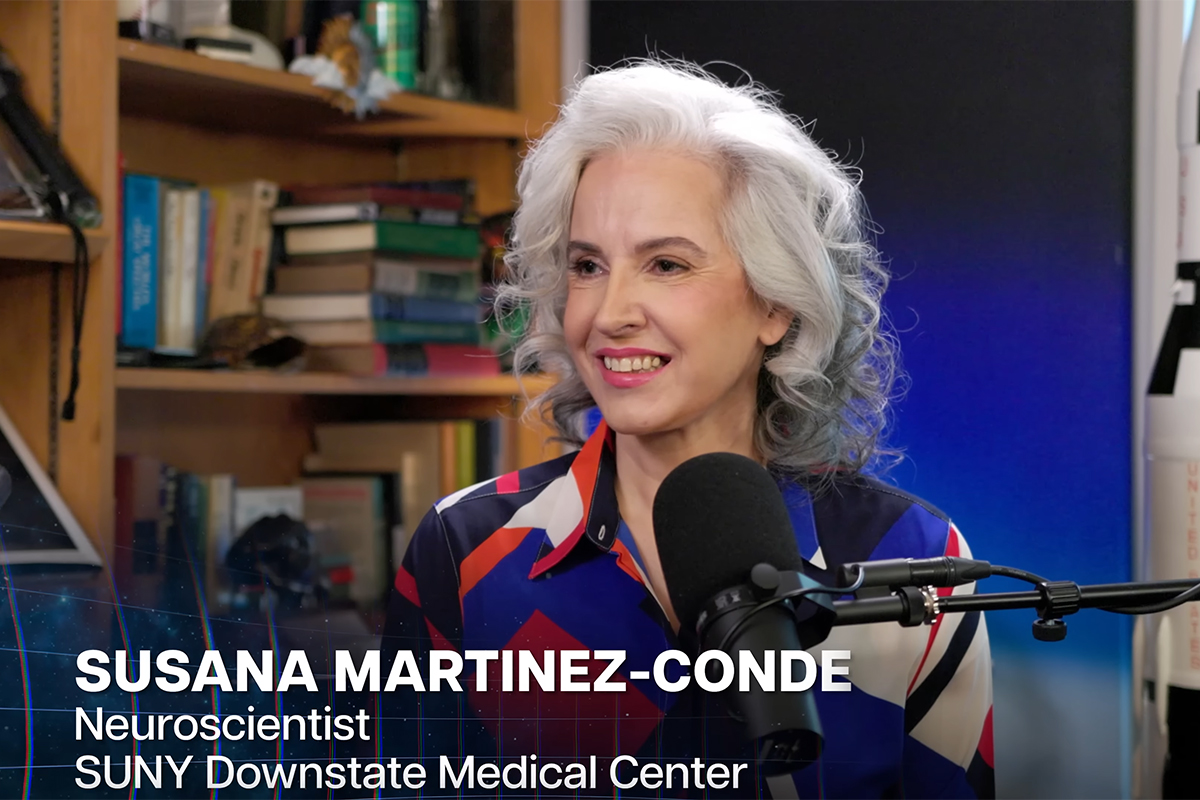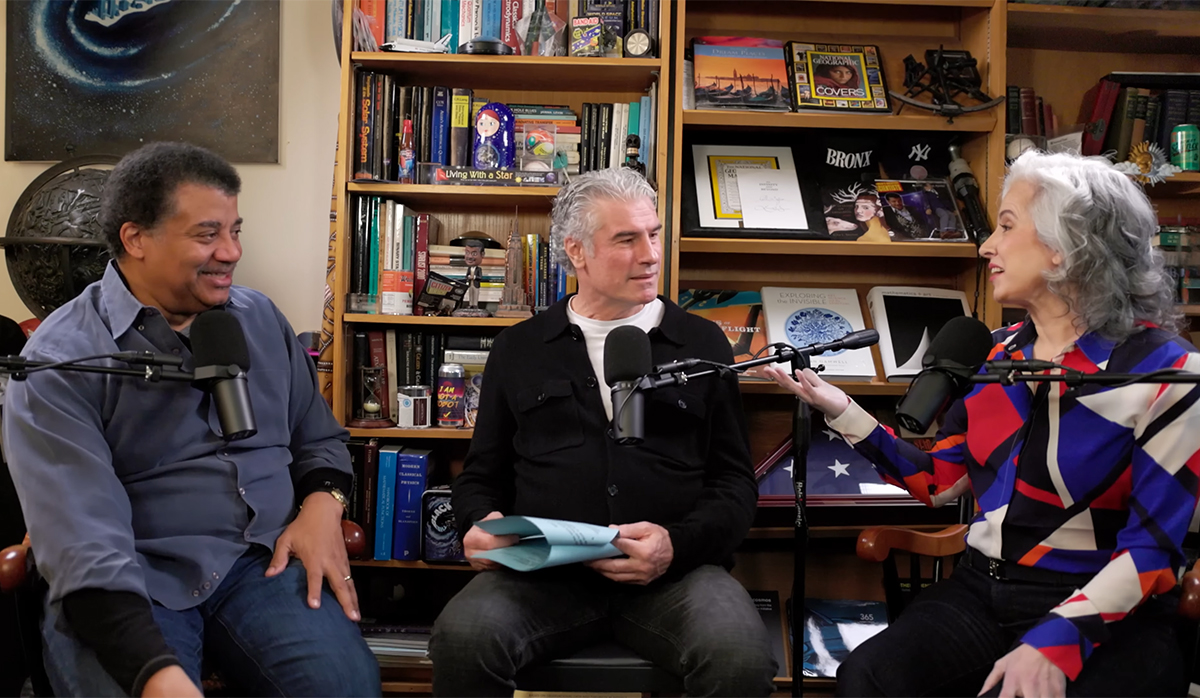Mind Games: Your Brain is Easier to Trick Than You Think
By Office of the President | Feb 25, 2025
 Magic and neuroscience may seem like an unlikely pair, but they share more in common
than one might expect. Susana Martinez-Conde, Ph.D., professor of Ophthalmology, Neurology, and Physiology & Pharmacology, recently joined
Neil deGrasse Tyson, Ph.D., and co-host Gary O’Reilly on StarTalk to explore the science behind illusions.
Magic and neuroscience may seem like an unlikely pair, but they share more in common
than one might expect. Susana Martinez-Conde, Ph.D., professor of Ophthalmology, Neurology, and Physiology & Pharmacology, recently joined
Neil deGrasse Tyson, Ph.D., and co-host Gary O’Reilly on StarTalk to explore the science behind illusions.
In the episode The Science of Illusions with Teller, Dr. Martinez-Conde unpacks how magicians exploit cognitive shortcuts, revealing how easily the human brain can be deceived. Legendary illusionist Teller, of Penn & Teller fame, joined the conversation, offering a rare glimpse into the magician’s toolkit. He explained that magicians don’t create illusions out of thin air but take advantage of the brain’s natural blind spots, knowing that “our brains are just not that hard to trick.”
 At the heart of every illusion lies a fundamental principle of neuroscience: the brain
filters out redundant information to focus on what matters most. This process, known
as “redundancy reduction,” allows us to navigate the world efficiently but also makes
us susceptible to deception. Magicians capitalize on this, using misdirection, attention
control, and sleight-of-hand techniques to manipulate perception.
At the heart of every illusion lies a fundamental principle of neuroscience: the brain
filters out redundant information to focus on what matters most. This process, known
as “redundancy reduction,” allows us to navigate the world efficiently but also makes
us susceptible to deception. Magicians capitalize on this, using misdirection, attention
control, and sleight-of-hand techniques to manipulate perception.
At Downstate’s Lab of Integrative Neuroscience, Dr. Martinez-Conde studies the mechanics of perception, particularly fixational eye movements—the tiny, involuntary motions our eyes make without us realizing it. These subtle movements are critical in processing visual information and have provided new insights into neurological conditions like Parkinson’s.

Alongside her husband, Stephen Macknik, Ph.D., who leads Downstate’s Lab of Translational Neuroscience, Dr. Martinez-Conde has pioneered the field of neuromagic—a discipline that uses illusions to explore the complexities of cognition. Their research examines how neurons transmit visual information, how the brain fills in perceptual gaps, and how magicians and the brain can manipulate attention and memory.
But illusions are not just for entertainment. They offer profound insights into how the brain constructs reality. As Dr. Martinez-Conde explains, everything we perceive is, in a sense, a figment of our imagination. While our eyes capture only fragments of the world around us, our brains seamlessly construct the rest. Understanding perception—and how it can be influenced—has wide-ranging applications, from neurological research to marketing, education, and even the fight against misinformation.
For those eager to explore the world of illusions further, Drs. Macknik and Martinez-Conde’s books Sleights of Mind and Champions of Illusion offer a deeper dive into the science of deception.
For a firsthand look at the intersection of neuroscience and magic, watch this captivating episode of StarTalk.